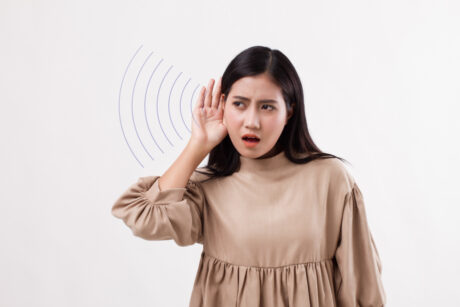While many people assume that hearing loss affects both ears equally, the reality is that it can impact one ear exclusively. This condition, known as hearing loss in one ear or unilateral hearing loss, presents a unique set of challenges and symptoms that often go unnoticed.
Understanding the specific nature of this condition is the first step toward finding a solution. By learning to spot the telltale signs of unilateral hearing loss, you can seek early intervention and pave the way for better outcomes.
What Is Unilateral Hearing Loss?
As the name implies, unilateral hearing loss refers to a reduction in hearing in a single ear. This is distinct from bilateral hearing loss, which is a reduction in hearing in both ears, often with similar severity.
The impact of this condition can vary significantly, ranging from a partial loss of hearing in one ear to a complete inability to hear. Recognising this difference is crucial, as the causes and treatment for unilateral hearing loss are often specific to the affected ear and can be very different from those for bilateral hearing loss.
Common Causes of Hearing Loss in One Ear
The causes of a partial loss of hearing in one ear can vary significantly, ranging from easily treatable issues to more serious underlying conditions that require immediate medical attention. Identifying the root cause is crucial for effective treatment.
- Sudden sensorineural hearing loss (SSHL): This is an urgent medical condition characterised by a sudden loss of hearing in one ear, occurring over a short period.
- Noise-induced trauma: Exposure to a sudden, extremely loud noise can cause damage to the inner ear, triggering noise-induced hearing loss.
- Ear infections or fluid build-up: Infections in the middle ear and a build-up of ear fluid can lead to a temporary or permanent reduction in hearing.
- Ménière’s disease: This inner ear disorder can cause episodes of vertigo, tinnitus, a feeling of pressure, and fluctuating hearing loss.
- Acoustic neuroma: A benign tumour on the main nerve leading from the inner ear to the brain.
- Earwax blockage: Infrequent earwax cleaning is a common and easily treatable cause of temporary hearing reduction.
Signs You Might Have Hearing Loss in One Ear
Because our other ear is working, the signs can be quite subtle and often go unnoticed for a long time. They may manifest in specific situations where the stronger ear is less effective, such as in noisy environments.
- Difficulty localising sound (e.g., struggling to tell where a siren is coming from).
- Struggling to hear conversations in noisy environments.
- One-sided tinnitus or a feeling of pressure in the ear.
- Sounds seeming distant or muffled in just one ear.
No Small Issue: Why Sudden Hearing Loss in One Ear Often Goes Overlooked
The brain is a master compensator. It relies on the stronger ear to make up for the deficit, effectively masking the problem in the affected ear. This can lead to a sudden loss of hearing in one ear going unnoticed, as the individual may not register the loss until they are in a particularly challenging listening environment, like a crowded room.
This is why the condition is often mistaken for simple ear blockage or fatigue after a long day.
When to See a Hearing Specialist
If you suspect you have a hearing loss in one ear, it’s always best to seek professional advice. Prompt medical attention is especially important for certain symptoms.
- Sudden hearing loss.
- Persistent symptoms lasting more than a few days
- Dizziness, tinnitus, or a feeling of fullness in one ear.
- A shift in hearing after an illness, head injury, or loud noise exposure.
How Unilateral Hearing Loss Is Treated
The treatment for unilateral hearing loss depends entirely on its underlying cause and severity. A comprehensive diagnosis is the first step in determining the most effective course of action.
- Medical treatment: For infections or sudden sensorineural hearing loss (SSHL), medical intervention with medications may be necessary.
- Hearing aids or CROS/BiCROS systems: These devices are used to route sound from the affected side to the better-hearing ear.
- Sound therapy: This is an option for managing accompanying tinnitus.
- Surgical intervention: Surgery may be required for structural causes, such as a tumour.
Don’t Ignore Changes in One Ear

A sudden or gradual change in your hearing should never be ignored. Even a partial loss of hearing in one ear can impact your ability to communicate, affect your balance, and diminish your overall well-being. By recognising the signs and seeking timely professional diagnosis, you can maintain your connection to the world around you.
If you are concerned about your hearing, booking a hearing test with a qualified audiologist in Singapore is the first step towards getting clarity and support. We provide a comprehensive ear check-up in Singapore to help you understand your unique hearing needs.










